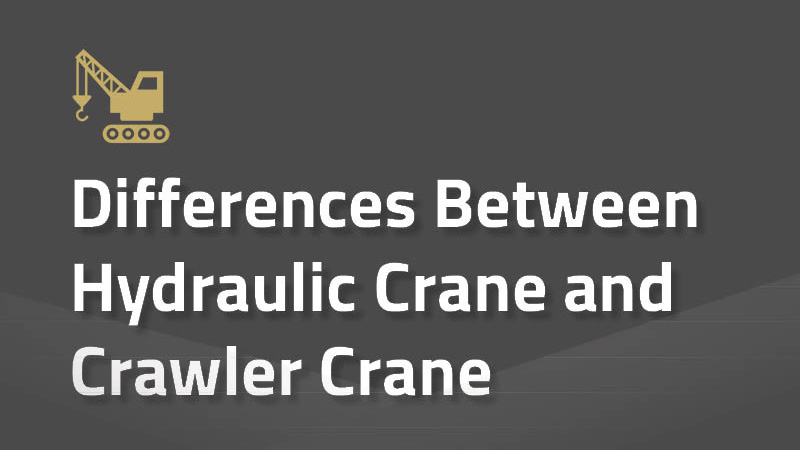
At construction sites, both hydraulic cranes and crawler cranes play crucial roles in handling large and heavy objects, ensuring smooth operations. While both types of equipment serve similar purposes, they come with distinct features and operational differences that make them suitable for different scenarios. Understanding these distinctions is key to selecting the right crane for a specific project.
- Hydraulic cranes are typically mounted on trucks, making them highly mobile and easier to transport. However, their mobility is limited by the need for paved roads or stable surfaces.
- In contrast, crawler cranes rely on their distinctive tracks to navigate rough terrains and uneven ground. This makes them ideal for projects where the terrain is unpredictable or unstable.
- Hydraulic cranes derive their power from an internal hydraulic system, which allows them to lift weights ranging from 30 to 600 tons. They are often used in urban environments due to their compact design and ease of setup.
- Crawler cranes, on the other hand, boast lifting capacities that can exceed 2,000 tons. Their robust structure enables them to handle immense loads, making them indispensable in shipyards and industrial complexes.
- One significant advantage of hydraulic cranes is their portability. A single operator can set up and operate the crane independently, reducing the need for additional manpower.
- Crawler cranes, while more cumbersome, offer unmatched stability thanks to their broad tracks. This feature is particularly beneficial when working on uneven surfaces or soft ground.
- Despite being less portable, crawler cranes excel in durability and strength. They are designed to withstand harsh environmental conditions and can perform tasks that require prolonged exposure to challenging terrains.
- Another critical difference lies in their operational flexibility. Hydraulic cranes are best suited for tasks requiring quick setup and teardown, such as temporary construction projects. Meanwhile, crawler cranes are preferred for long-term projects where continuous operation is essential.
- It's worth noting that crawler cranes are generally more expensive than hydraulic cranes due to their larger size and greater functionality. However, their ability to traverse difficult terrains justifies the investment for certain applications.
- When deciding between the two, factors like the project's scale, the nature of the terrain, and the required lifting capacity must be carefully considered. For instance, a hydraulic crane might suffice for urban construction projects, whereas a crawler crane would be preferable for offshore oil rigs or mountainous areas.
In conclusion, both hydraulic and crawler cranes have their unique strengths and limitations. Choosing the appropriate crane involves weighing the pros and cons based on the specific demands of the project. Whether it’s maneuvering through tight city streets or scaling rugged landscapes, each type of crane serves a vital role in modern construction and logistics.
Final Thoughts
Ultimately, the decision between hydraulic and crawler cranes should align with the project's goals and constraints. Both cranes contribute significantly to construction efficiency, but their effectiveness hinges on proper application. By understanding their capabilities and limitations, engineers and contractors can optimize their operations and achieve success across diverse environments.
Secondary Air Injection System
Secondary Air Injection System,secondary air pump,Smog air pump for Germany car,Secondary Air Pump
Suzhou Barjon Auto Parts Co.,Ltd , https://www.cn-barjon.com